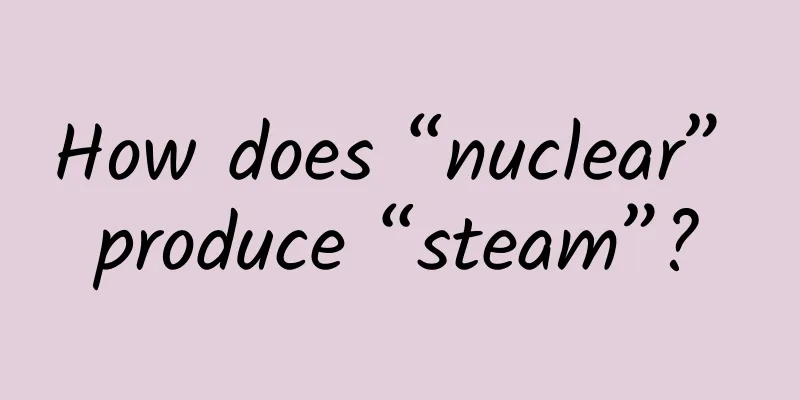How does “nuclear” produce “steam”?

|
Science Times reporter Ji Chunhong On the winding coastline of the Yellow Sea, there is a special pipeline about 23 kilometers long. One end of it is connected to the nuclear power plant and the other end is connected to the petrochemical base. It continuously transports the clean steam converted from nuclear energy to various production lines in the petrochemical base. On June 19, 2024, the country's first industrial nuclear energy steam supply demonstration project, "Heqi No. 1", was successfully put into operation at the Tianwan Nuclear Power Plant in Lianyungang, Jiangsu. This 600-ton/hour steam supply line can provide 4.8 million tons of industrial steam to the base every year. So far, "Heqi No. 1" has supplied more than 1 million tons of clean steam to the outside world. How is industrial steam produced? It can be compared to a combination of "boiling water" and "self-heating pot". The principle of power generation in a nuclear power plant is actually the same as boiling water. It is to heat water into steam and drive the steam turbine to generate power. The principle of nuclear energy steam supply is like heating a self-heating pot. "Boiling water" is equivalent to the heating pack of the "self-heating pot". The food in the "self-heating pot" is equivalent to the desalted water after desalination of seawater. The heating pack generates heat to heat the food in the hot pot above, but the two are not in contact, and the heating pack will not dirty the hot pot. "Heqi No. 1" uses the secondary circuit steam of Tianwan Nuclear Power Units 3 and 4 as the heat source, and sends 1.8 MPa and 248 degrees Celsius steam to the Lianyungang Petrochemical Industrial Base through an independent pipeline network. The nuclear power unit itself has four safety barriers, which ensure the cleanliness and safety of nuclear energy steam supply from the source. In the steam supply system between the nuclear power plant and the petrochemical base, there is only heat exchange, without any material exchange of water or steam, which further ensures that the nuclear energy steam supply is clean, safe and reliable, and has no radiation. Compared with traditional coal-fired steam generation, nuclear energy greatly reduces carbon emissions in steam production. It is estimated that the heat generated by the fission of 1 kg of uranium-235 is equivalent to 2,700 tons of standard coal, and one ton of standard coal can produce 5.5 to 8 tons of steam. This means that the annual steam supply of "Heqi No. 1" can reduce the consumption of about 400,000 tons of standard coal for the petrochemical base, equivalent to reducing carbon dioxide emissions by 1.07 million tons, which is equivalent to an additional afforestation area of 2,900 hectares. |
>>: When the weather gets cold, you can eat fruits hot →
Recommend
Uncle Chen's "Landing and Monetization Course for Knowledge Anchors" video
Uncle Chen's "Landing and Monetization C...
Is it enough for Jio Router to establish its position through three generations of upgrades?
Ubiquitous smart technology has fueled the popula...
Hong Raiders Value Season Ranch Ranch A Intensive Training Camp
Hong Raiders Value Season Ranch Ranch A Intensive...
How to increase the activation rate of information flow advertising?
How to increase activation volume ? Similar quest...
Light bulbs to connect to the internet? Researchers want to use LEDs as routers
Nowadays, WiFi has become an indispensable thing ...
How old is your earliest memory? Why can't you remember anything before that?
When you were a child, you chewed your feet, ate ...
Analysis of relationship marketing structure and case interpretation
During the development process of an enterprise, ...
No need for data cables! How do mobile phones achieve wireless charging?
Why can some phones charge wirelessly but others ...
Super-burning new Blue Whale power, extraordinary driving experience, and less than 150,000 yuan, can Changan UNI-Z take the lead?
Recently, Changan Automobile released more offici...
Nature has a set of "lazy" rules? You heard it right!
1. Introduction: Nature’s mysterious “lazy” law H...
UK new car production and growth rate from October 2019 to June 2020 (with original data table)
...
The heavy-tasting pictures in our eyes are actually the interpretation of mothers' maternal love.
Have a mother who loves her baby 24/7 The happine...
9 rules for building community operations
For community operations , creating a membership ...









